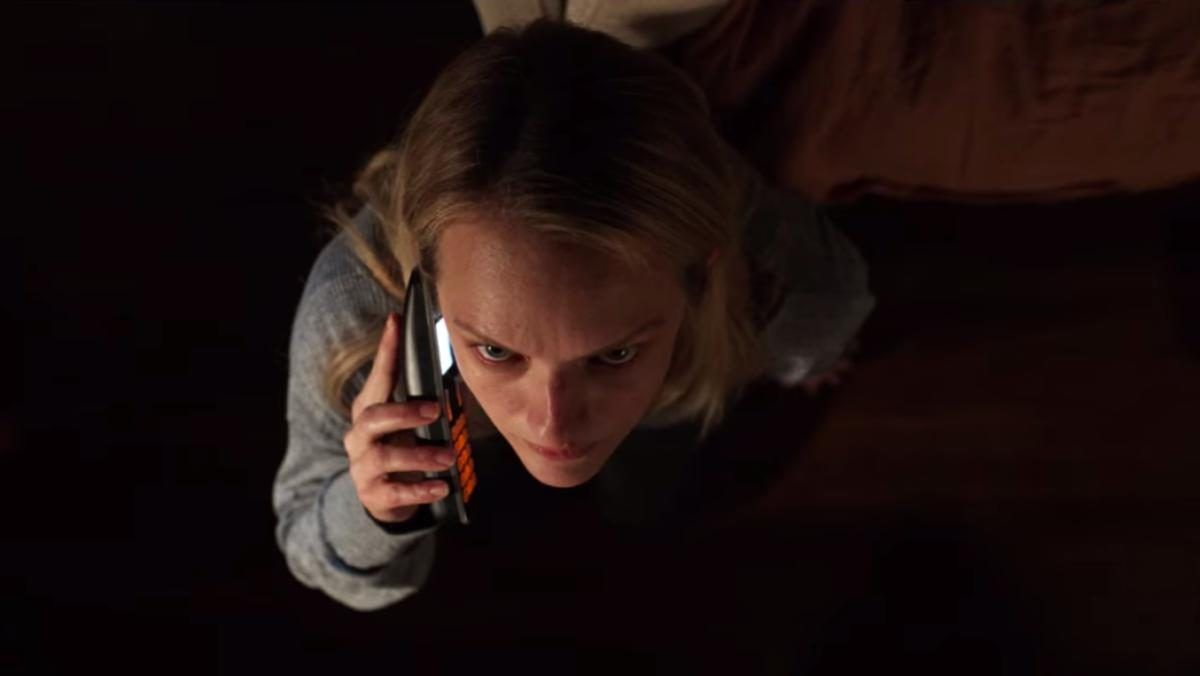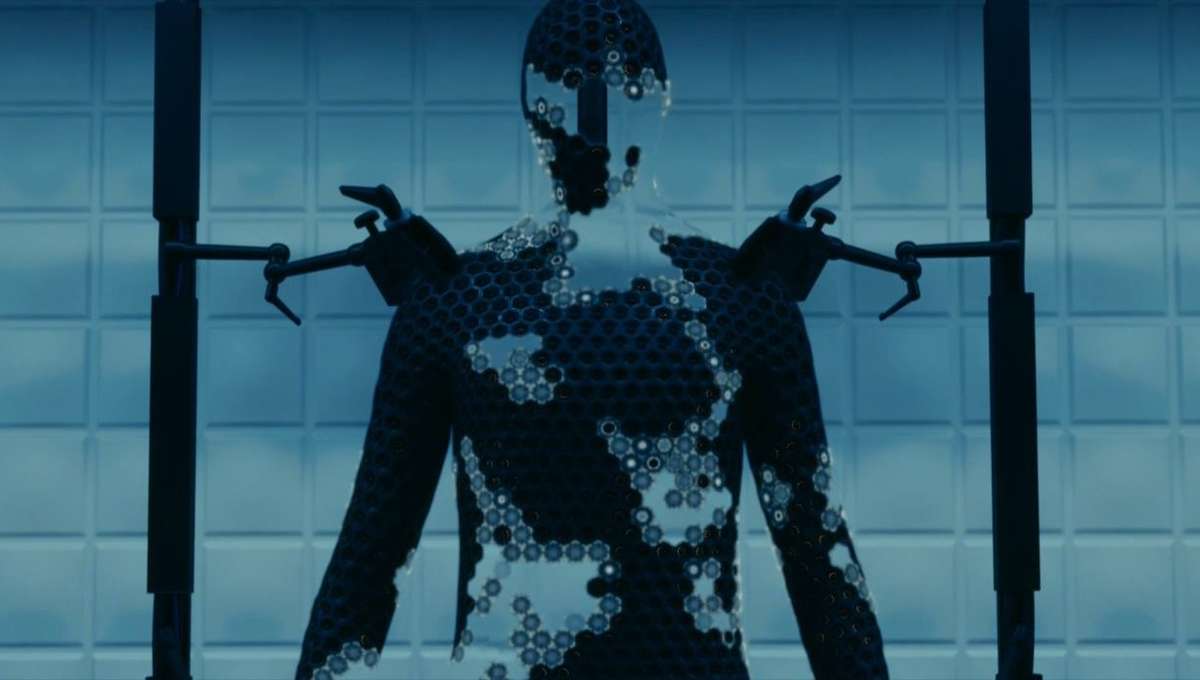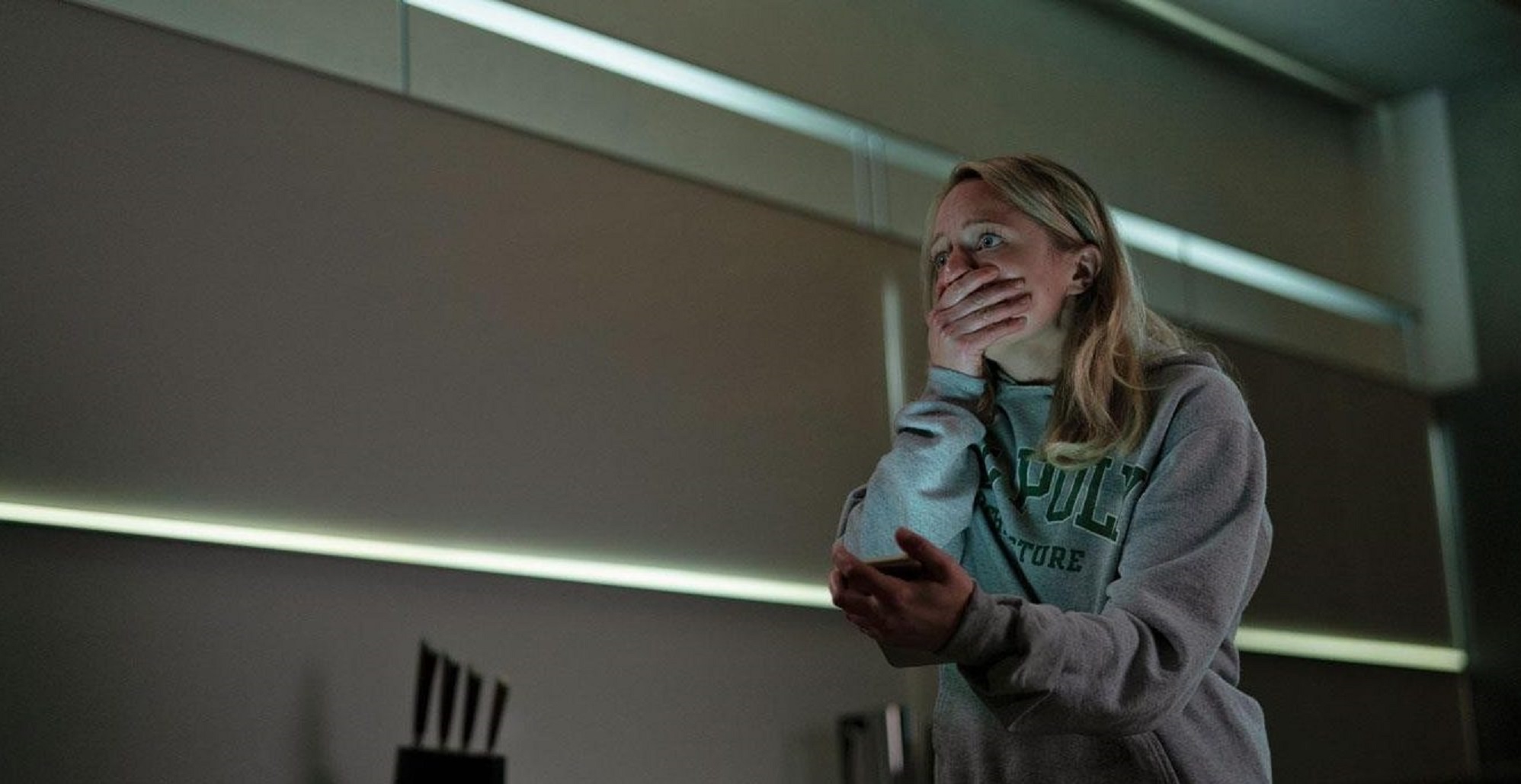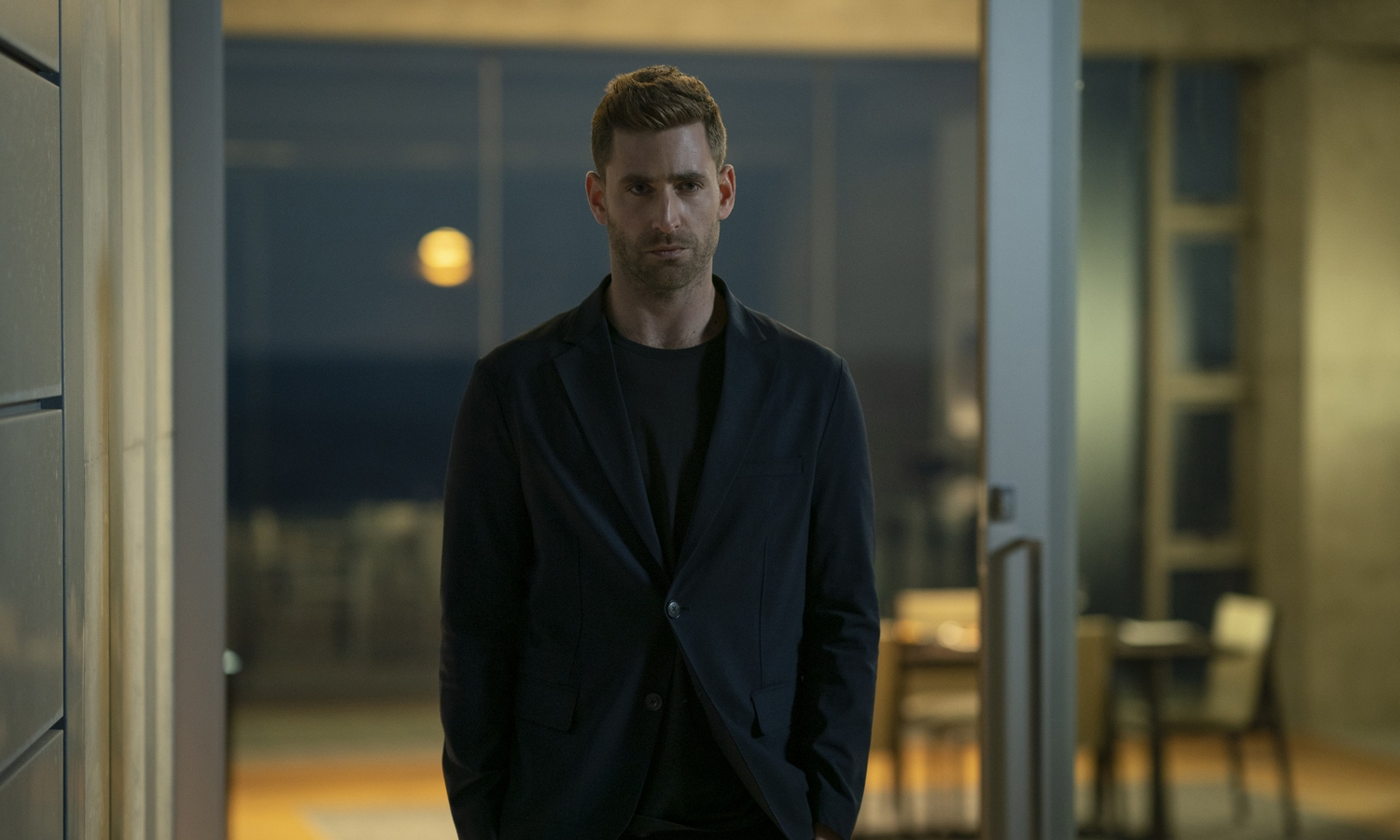
It has been a while since I’ve gasped during a thriller, yet Leigh Whannell’s ‘The Invisible Man’ (2020) managed to do just that and more. Calling it an adaptation of H.G. Wells’ novel would be perhaps too much, since the film retains only a loose connection to the classic sci-fi story. To compensate for such a departure from the original, Whannell’s version borrows from the Ring of Gyges in Plato’s ‘Republic’, an artefact which is said to grant its owner the power to become invisible at will—leading to a protagonist that can enter any home. No one is truly safe.
The film opens with Cecilia as she carefully goes ahead with an escape plan that she has clearly been working on for a while. It’s almost botched, but her sister Emily helps her with a ride. Only then do we see exactly how dangerous and abusive her successful, ridiculously rich, and controlling boyfriend Adrian really is. What follows is meant to be a slow but steady journey of healing. Or so it begins, at least. News of Adrian’s suicide reach Cecilia, who then learns that she has also been designated as one of his heirs. Tom, Adrian’s brother, handles the estate, and everything about him just feels odd.
 ©UNIVERSAL PICTURES/BLUMHOUSE PRODUCTIONS
©UNIVERSAL PICTURES/BLUMHOUSE PRODUCTIONS
Even so, we’re led to believe better days are ahead. Cecilia struggles with the trauma of both physical and psychological abuse that clearly lasted years, but she’s learning to trust and live again while sheltered in her friend James’s house and in the company of his teenage daughter. Slowly, but surely, Cecilia should eventually heal. Then things go bump in the night. Adrian doesn’t seem to have left her. Not really. He lingers, unseen yet heard and sensed. Like a ghost. What starts out as a mere whiff of paranoia blows into soul-crushing horror as we realize that Cecilia isn’t losing her mind, even though everyone around her thinks she is. Adrian Griffin never died. An expert in the field of optics, he developed a suit that allows him to be invisible, and that is how he proceeds to torment and torture the one woman who dared to get away from him.
If we strip the horror and science fiction elements away, what we’re left with is a gut-wrenching tale of harassment and domestic abuse. Adrian literally gaslights Cecilia, pushing her to think that she is losing her mind before he tears her away from the few people she loves and cares about. We descend into dread and madness when he slits Emily’s throat and slips the knife into Cecilia’s hand before she can even react. Just like that, the heroine is framed for murdering her own sister and confined to a psychiatric facility, where the villain, the concealed terror, continues with his ploy until Cecilia learns that she’s pregnant. She had been taking birth control pills over the course of the relationship and unbeknownst to her, Adrian replaced the pills with something else. Cecilia is now carrying the child of the monster everyone thinks is dead, and it’s his ill-fitting brother that offers her a way out. All she has to do is surrender unto Adrian and return to her old life. A steep price for freedom.
 ©UNIVERSAL PICTURES/BLUMHOUSE PRODUCTIONS
©UNIVERSAL PICTURES/BLUMHOUSE PRODUCTIONS
Don’t let the trailer fool you. You might think it gives away the story. It doesn’t. ‘The Invisible Man’ is brilliantly executed, and most of its strength comes from three key elements: Elizabeth Moss’s extraordinary performance as Cecilia; the powerful screenplay, a foundation for this superb sci-fi thriller; and the simplicity of production with a focus on camera work, since the depiction of the invisible man is only partially done with the help of CGI. Everything else comes from old school trickery.
Let’s begin with Leigh Whannell himself. Better known for the ‘Saw’ franchise and ‘Insidious’ (2010), Mr Whannell is one of the master storytellers of his generation. His youthful energy and appreciation of classical production methods seem to work remarkably well together. It makes him stand out among his peers, since cinema is mostly about our ability to convey a story and make the viewers feel whatever we want them to feel.
 ©UNIVERSAL PICTURES/BLUMHOUSE PRODUCTIONS
©UNIVERSAL PICTURES/BLUMHOUSE PRODUCTIONS
Leading the movie through its carefully designed twists and turns is Elizabeth Moss. Her talent has already garnered heaps of applause and critical appreciation. She has already won two Golden Globes—one for ‘The Handmaid’s Tale’ (2017) and one for ‘Top of the Lake’ (2013), while many might remember her from even farther back as Peggy Olson in ‘Mad Men’ (2007-2015). In an interview, Mr Whannell said that he has worked with incredibly talented actors before, ‘but working with Elizabeth Moss was just a revelation for me. She can do anything.’
Her character’s name, Cecilia, is derived from the Latin ‘caecus’ (‘cecco’ in Italian), which means blind. She’s often called ‘C’ in the film, which is clearly pronounced like ‘see’, and that is but one of the things that stand out about her. C’s journey is one of growing strength, of ascending from a lower place of fear and trauma to a higher ground where she is able to completely let go and say ‘enough’. And Moss delivers a visceral performance with a rare ability of truly becoming Cecilia, of removing her true self from the screen altogether. What we are left with is this terrified woman who is desperately trying to make sense of things. Why won’t anyone believe her? It sounds crazy, yes… but it happened. It’s still happening!
 ©UNIVERSAL PICTURES/BLUMHOUSE PRODUCTIONS
©UNIVERSAL PICTURES/BLUMHOUSE PRODUCTIONS
Oliver Jackson-Cohen of ‘The Haunting of Hill House’ (2018) plays Adrian Griffin. We don’t see him much, but Whannell does such a good job of ‘showing’ him, still, that whenever he is visible on screen, we can’t help but recoil from what a heartless, demented monster lurks beneath that dashing, charming façade of his. Michael Dorman of ‘Patriot’ (2015-2018) and ‘Daybreakers’ (2009) does a marvellous job of portraying Tom Griffin, a character that immediately arouses suspicion and concern even when he’s simply telling Cecilia that she has inherited a fortune. To amplify that sensation of Tom not quite ‘fitting’, Whannell had him wear suits that were two sizes too small. The end result is chilling because Tom devolves into a sublime patsy.
Acting as a counter-balance of normalcy and discipline, Aldis Hodge’s James Lanier feels like a steady thread that we can hold on to for a semblance of comfort while the rest of Cecilia’s life crumbles before her own eyes. Storm Reid’s Sydney Lanier is supposed to represent hope and compassion. So, when both are viciously attacked by the invisible man, it tears us apart. The very idea of freedom and happiness are trampled and beaten bloody. We are thrust into the same nightmare as Cecilia, and she is the only one who can get us out.
 ©UNIVERSAL PICTURES/BLUMHOUSE PRODUCTIONS
©UNIVERSAL PICTURES/BLUMHOUSE PRODUCTIONS
Where the screenplay is concerned, Mr Whannell offers a variety of praiseworthy points. As soon as the film starts, we’re dumped right into the middle of Cecilia’s escape with zero prior exposition. There is no opening to offer a more detailed account of how it got to this point. ‘I wanted to just drop the audience into Cecilia’s situation without a back story and make them feel everything through her, and luckily I had Elizabeth Moss who is very good at communicating a lot to the audience without saying anything.’
Respectful of ‘cinematic language’, the Australian director kept track of what he envisioned the camera doing whilst penning each scene in the script. Through that process, his directorial vision led to the camera moving away from the actors during production, as if it had a mind of its own. The overall effort is translated into a silver screen oeuvre that borrows visual impressions from David Fincher’s ‘Zodiac’ (2007) and startling beats from his own notorious ‘Saw’ (2004).
‘The Invisible Man’ was initially attached to the Dark Universe, with David S. Goyer set to pen the script. Later on, it had Ed Solomon replacing Goyer and Johnny Depp suggested for the titular role before the project was finally given to Whannell. Yet I doubt anyone would have been able to exploit and express dread and spine-freezing terror like he did. Part of the film’s success should be attributed to Jason Blum’s involvement, as well. The founder of Blumhouse Productions brought his own experience to the table where chills and goose-bumps are concerned, since ‘Get Out’ (2017), ‘Paranormal Activity’ (2007) and ‘The Purge’ (2013) are just three of his insanely successful genre-related credits.
 ©UNIVERSAL PICTURES/BLUMHOUSE PRODUCTIONS
©UNIVERSAL PICTURES/BLUMHOUSE PRODUCTIONS
The true stroke of magic comes through its cinematography. ‘The Invisible Man’ features the impressive camera work of Stefan Duscio, a relatively new name in Hollywood with barely a handful of feature credits to his name—chief among them being ‘Backtrack’ (2015) and ‘Jungle’ (2017). But it is here that he proves just how much can be accomplished through the camera, alone.
Elizabeth Moss’s performance wouldn’t have had the same impact without his craft and mainly without the abundance of pan-out movements that make the viewers wonder whether Adrian is there, albeit invisible. The terror is basically fuelled by Duscio’s use of negative space. Plenty of spaces around the characters are included into the story, suggesting that Adrian is, in fact, there. The camera lingers after a line is said, too—a thought provoking gesture that further builds tension because all Cecilia has is this feeling, this sensation of hairs rising on the back of her neck, while we’re watching from the outside, analysing every inch of empty space around her and other characters as we try to guess where Adrian will attack from.
Accompanying the exquisite cinematography is the modest use of VFX to create the invisible man, while Duscio and Whannell’s analogue work of framing and writing, respectively, reigns supreme. The attic scene is particularly memorable not only because of the story-related elements that it reveals, but also because it’s one of the few moments where Duscio was given enough darkness to play with. Throughout the rest of the film, everything is thoroughly illuminated—thus making the challenge of ‘showing’ the invisible man even more daunting.
 ©UNIVERSAL PICTURES/BLUMHOUSE PRODUCTIONS
©UNIVERSAL PICTURES/BLUMHOUSE PRODUCTIONS
Ultimately, the film succeeds where others portraying the ‘apparently crazy woman no one believes’ often fail. We believe Cecilia because we are not given another choice. The way in which the tension is built, Adrian’s punching of the passenger door window, the steamy breath rolling behind her in the middle of the night. The medicine bottle she’d left behind. Moss’s performance alone translates everything that Whannell wanted to portray into a living being, into a woman who is desperate to live freely and unafraid.
The lengths that she is willing to go to in order to achieve that offer an unexpected conclusion to ‘The Invisible Man’. But beyond the floating knives and pulled blankets and peculiar whirring and clicking sounds in an apparently empty room, one truth lingers in the audience’s collective mind: how far will one go to escape and survive their relentless abuser? Leigh Whannell answers with superlative writing and direction, putting a fresh new spin on a timeless tale.
Jules R. Simion
Jules is a writer, screenwriter, and lover of all things cinematic. She has spent most of her adult life crafting stories and watching films, both feature-length and shorts. Jules enjoys peeling away at the layers of each production, from screenplay to post-production, in order to reveal what truly makes the story work.
AMC Nabs Anne Rice’s ‘Vampire Chronicles’ and ‘The Lives of the Mayfair Witches’ for TV
Vampire lovers may rejoice, for after four long years since beloved author Anne Rice announced her…
Tribeca Names 2020 Winners, ‘The Half of It’ and Steve Zahn Among Them
Actors Steve Zahn and Assol Abdullina, along with Alice Wu’s ‘The Half of It’ (2020), were some of…
My Brilliant Friend Review: A Captivating Story of Love, Friendship and Betrayal
There is a pile of books on my desk from the to-read list. Four of them have been there for a…
Don't miss out
Cinematic stories delivered straight to your inbox.
Ridiculously Effective PR & Marketing
Wolkh is a full-service creative agency specialising in PR, Marketing and Branding for Film, TV, Interactive Entertainment and Performing Arts.


